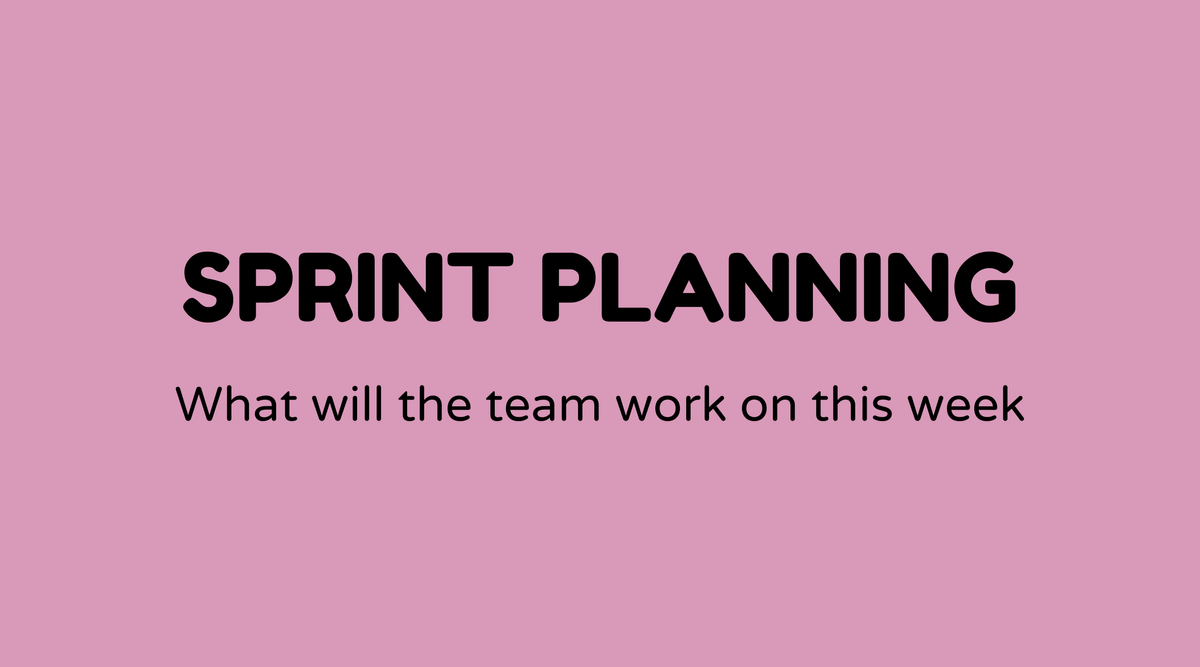Sprint planning

Overview of Sprint Planning:
Sprint planning is a key element of agile project management often utilized in software development. It involves determining what can be accomplished in the upcoming sprint—or cycle of work—and preparing to deliver those product increments. At its core, sprint planning provides teams with a clear direction by establishing what work will be completed and how it will be executed.
For those operating in agile settings, sprint planning lays a foundation for success, assisting teams in breaking down complex projects into manageable tasks. Not only does it clarify the path toward achieving project objectives, but it also aligns the team's efforts with business goals. Agile practitioners often emphasize the importance of planning; thus, investing time in comprehensive sprint planning is essential. GitLab offers valuable resources and examples on sprint planning structure and execution.
Why Sprint Planning Matters:
Without effective planning, teams may easily veer off track or waste time on tasks that lack value. Sprint planning mitigates uncertainty and miscommunication by aligning everyone's expectations and understanding of the project. Through focused planning, teams transition from a disorganized group to a coordinated unit, yielding results that satisfy customers.
During sprint planning, teams also identify potential issues and address them proactively. This ensures that the project timeline and goals are realistic and can adapt to changing circumstances. Such adaptability encourages a forward-thinking working environment—a significant advantage in today's business climate. External resources like Atlassian explain the benefits of sprint planning within agile practices.
What is Sprint Planning:
So, what is sprint planning? It is a meeting where team members discuss and decide on the primary outcomes for the upcoming sprint—a pre-determined time frame, typically two weeks. During this session, teams review backlogs, assess team capacity, and establish priorities.
A standard sprint planning gathering is not just about what tasks must be completed; it also focuses on understanding how the team intends to achieve those outcomes. This dual emphasis aids in creating a clear plan and identifying necessary resources for the sprint. Moreover, sprint planning involves key participants: the team, the Scrum Master, and the Product Owner, who collaborate to ensure alignment.
How to Do Sprint Planning:
Sprint planning may seem daunting at first, but once you understand the process, it becomes much more manageable.
-
Set the Sprint Goal: Start by discussing the objectives and desired outcomes for the sprint, providing the team with a guiding focus.
-
Review and Refine the Backlog: Examine the product backlog and select items that can feasibly be completed during the sprint. Prioritize them based on the sprint goal.
-
Estimate Effort: Employ estimation techniques like story points or T-shirt sizing to assess how much work each task will entail.
-
Break Down Tasks: Divide user stories into smaller, actionable tasks, ensuring that each task is clear and well-defined.
-
Allocate Resources and Capacity: Evaluate team capacity and assign tasks according to skills and availability.
-
Finalize the Plan: After discussions, confirm the sprint plan with the team and agree on the timeline.
Scrum Alliance provides numerous resources for further insights into effective sprint planning practices.
Sample Agenda of Sprint Planning:
Here’s a typical agenda for a sprint planning meeting:
| Time | Activity | Participants |
|---|---|---|
| 10 minutes | Review sprint objectives | Scrum Master & Team |
| 15 minutes | Discuss backlog items | Product Owner & Team |
| 20 minutes | Task breakdown and prioritization | Team |
| 15 minutes | Effort estimation and resource allocation | Scrum Master & Team |
| 10 minutes | Final review and confirmation | All Participants |
The agenda is adjustable and can be tailored based on specific team dynamics and project needs.
Examples of Sprint Planning:
Real-Life Example: Consider a software startup preparing to launch a new app feature. During sprint planning, they focus on user feedback to enhance user interface design. They identify tasks such as A/B testing various layouts and developing new interface elements, all in line with their sprint goal of boosting user satisfaction.
Another Example:
In larger organizations, sprint planning may involve multiple teams collaborating on interconnected aspects of a larger project. For instance, one team might concentrate on front-end development while another concurrently works on backend integrations, both targeting a cohesive sprint goal.
FAQs
What is the duration of sprint planning?
- Typically, sprint planning should not exceed two hours for each week of the sprint. Therefore, for a two-week sprint, the planning meeting should be limited to four hours.
Who participates in sprint planning sessions?
- The Scrum Master, Product Owner, and Development Team members participate, ensuring that all viewpoints are considered.
Why is setting a sprint goal important?
- A sprint goal helps prevent scope creep by providing the team with clear direction and purpose for each sprint.
How often should sprint planning occur?
- Sprint planning takes place at the beginning of every sprint cycle, usually every two to four weeks, depending on the team's sprint duration.
Can sprint planning be done remotely?
- Yes, remote sprint planning is common. Tools like Slack, Zoom, or JIRA facilitate organizing and communicating plans effectively online.
What happens if planned tasks are incomplete?
- Incomplete tasks are reviewed and moved into the next sprint backlog, with their priority adjusted according to the new sprint goal.



